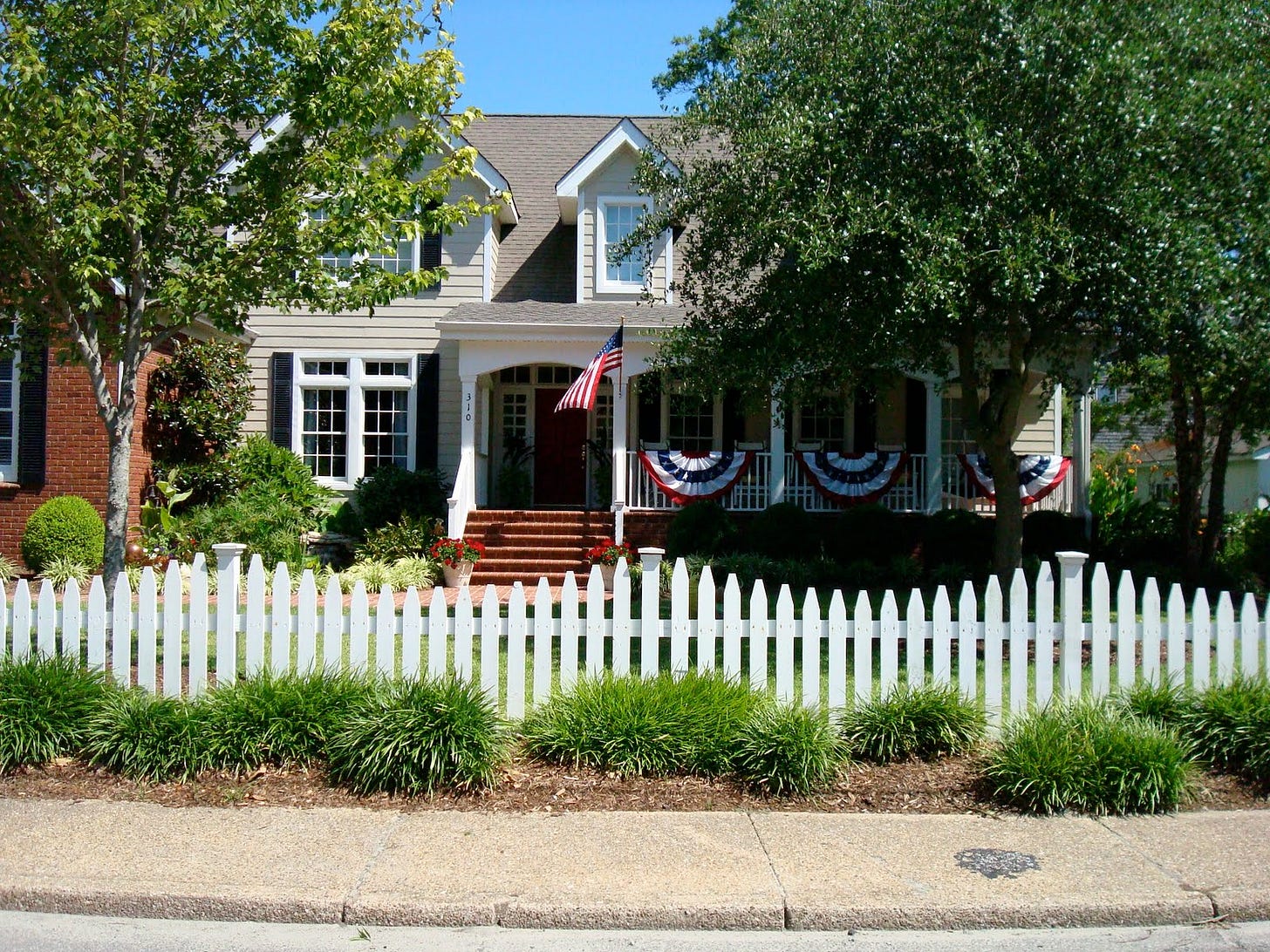Protecting your home from climate catastrophe
Rules for insulating your wealth from the risks of climate change
The rules for sound investing and money management have been stable – and successful – for a long time. The big ones are:
Spend less than you make.
Avoid debt, especially higher-interest debt like credit card debt.
Start investing early to capture the benefits of compounding.
Invest a portion of every paycheck in a set of diversified, low-cost stock and bond index funds to capture the magic of dollar cost-averaging.
Buy a home when you can afford to, which acts as forced savings.
If you followed these rules faithfully for a few consecutive decades since WW II, you’ve likely done quite well.1
As we know, climate change, political polarization, and a media system that rewards tribalism and conflict has led the world into a new, turbulent, and uncertain era. In light of this, one of the questions we should each be asking is:
Does the growing upheaval in the world create new financial risks and, if so, should I make adjustments to how I think about my assets and deploy my money?
[Note: what follows is for informational purposes only and is not investment advice.]
To answer that question, it will be helpful to divide destabilization changes into two buckets:
The first-order effects of climate change that have made every place less safe, and made certain climate-vulnerable places significantly riskier.
Increased societal turbulence and instability due to political polarization, internet media dynamics, second-order climate impacts, and other factors.
Bucket #1 is extreme weather – intensified hurricanes, rain storms, flooding, tornados, heat, drought, wildfires, etc. – and its direct impacts.
Bucket #2 is everything else, including political polarization and instability, perverse internet media incentives, the relative brittleness of presidential systems of government, the second- and third-order effects of climate change, and how these factors interact.
Today I’ll focus on Bucket #1, next week I’ll look at Bucket #2.
Because the Bucket #1 destabilization shifts – climate change-intensified weather events and their direct impacts – are rooted in the physical world, the key financial insights here have to do with real property, including our homes.
Beware brittleness bubbles – If you can avoid it, don’t own real estate in a climate-vulnerable place, period. It’s not only a bad idea for the obvious reasons – your home could burn or flood, or your insurance rates could rise, driving down the value of your home – but also because these risks are not yet reflected in market prices. The housing market still treats real estate in Miami Beach and other vulnerable places like its value is as durable as the value of real estate in safer places. Spoiler alert: it isn’t. This is an unstable state that will eventually snap back into equilibrium. You don’t want to be left holding the bag when that happens. If you live or want to live in a climate-vulnerable place, considering renting.
Don’t buy a home that already has water problems – As Climate Central put it: “[A]s the world warms, more water evaporates from oceans, lakes, and soils. Every 1°F rise also allows the atmosphere to hold 4% more water vapor. So when weather patterns lead to heavy rain, there is even more moisture available for stronger downpours, increasing the risk and severity of flooding.” A home that’s already experiencing light flooding or water seepage is a bad bet for a future of increasingly intense rain storms. If a home you’re looking at already needs a sump pump, for example, think twice before buying it. If you do, not only will you be stressed every time it rains, you’ll be overpaying because the risk isn’t yet priced in. If you already own a home like this, the best financial move is to sell it before its value falls. Alternatively, you should optimize your basement for flood durability and recovery by: elevating HVAC systems, elevating electrical outlets, and removing objects that aren’t durable in water – e.g., no rugs, no Ikea furniture. Homes aren’t just assets, of course, they have deep emotional importance. If you don’t want to sell, and you can afford to take the risk, that’s obviously okay. But make the choice with your eyes open.
Ruggedize your home – There are a range of ways to make your home more physically durable against climate change risks, especially flooding and wildfires. These include:
French drains
Shorter roof-replacement cycles
Elevated HVAC systems
Double-paned windows
Fire-resistant trees
Fireproof roofs and siding
Covering vents, chimneys, and gutters with metal mesh
You should make these kinds of investments sooner rather than later – an ounce of prevention is worth a pound of cure.
Next time I’ll offer further, broader principles for smart investing in the age of destabilization.
Notes:
https://www.climatecentral.org/news/report-pouring-it-on-climate-change-intensifies-heavy-rain-events
In a highly unequal country and world, not everyone can afford to invest, buy a home, etc. And who can and can’t isn’t randomly distributed, it’s largely the result of accumulated oppression, discrimination, and differential access to opportunity over generations.





